-
1 of 253523 objects
Huma Bird, Bird of Paradise c. 1787-91
Gold, rubies, emeralds, diamonds, pearls, silver gilt | 42.0 x 20.0 x 28.0 cm (whole object) | RCIN 48482

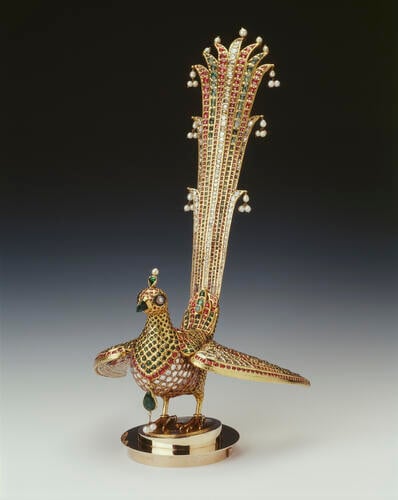

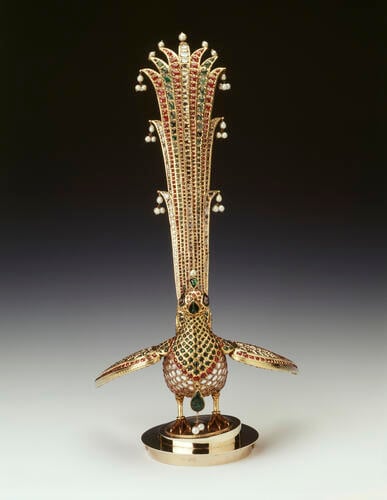
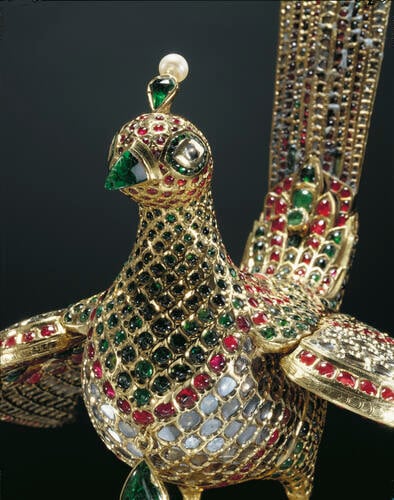
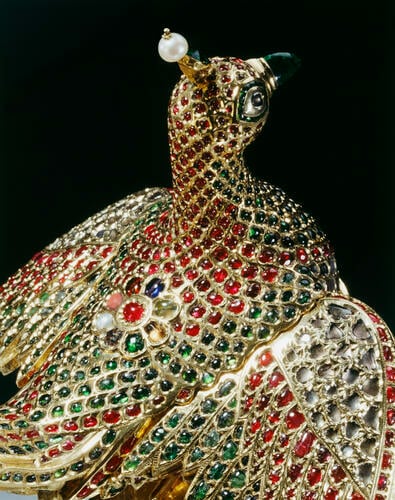
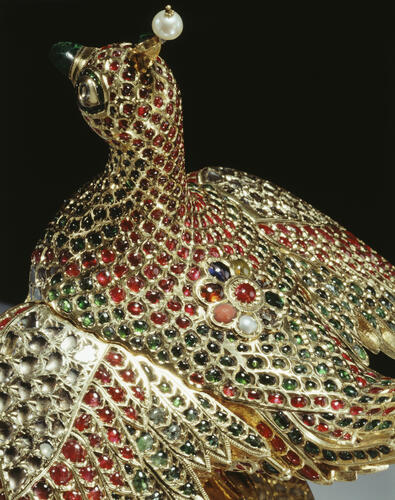
-
The defeat and death of Tipu, Sultan of Mysore, and the sack of his citadel of Seringapatam in 1799 put an end to more than a decade of conflict in southern India, and pre-empted a possible military alliance between Tipu and Napoleon Bonaparte. In the heat of the action the Sultan's magnificent treasury and library were ransacked by the British forces, and the gold coverings of his throne were cut up into small pieces for distribution as prize. The throne, which Tipu may never in fact have ascended in state, was an octagonal wooden platform raised 1.2 metres (4 feet) from the ground on eight supports in the shape of tiger legs. It was surrounded by a railing with a small jewelled tiger head above each support, and surmounted by a canopy raised on a post at the back. In the front was a life-size tiger head (later presented to William IV, now at Windsor Castle). Every element was overlaid with 2 mm (1/16 inch) gold sheet. Above the canopy hovered the huma or bird of paradise.
In a letter of July 1799 to the Governor-General of India, Lord Mornington, Captain Macaulay (Private Secretary to the British Commander-in-Chief, General Harris) explained that the huma was 'supposed to fly constantly in the Air, and never to touch the ground. It is looked upon as a Bird of happy Omen, and that every Head it overshadows will in time wear a Crown'. After the breaking up of the throne the huma had already been allocated when it was reacquired by Mornington, now Lord Mornington, Captain Macaulay for presentation to George III. The stand was made for it, by Paul Storr, after the King had passed the huma to the Queen.
Catalogue entry adapted from George III & Queen Charlotte: Patronage, Collecting and Court Taste, London, 2004Provenance
Made for Tipu Sultan; acquired by Marquess Wellesley for the Directors of the East India Company, 1799; by whom presented to George III, 1800; by whom given to Queen Charlotte; by whom bequeathed to four of her daughters, 1818; by whom given to George IV, 1818
-
Creator(s)
(nationality)Acquirer(s)
-
Medium and techniques
Gold, rubies, emeralds, diamonds, pearls, silver gilt
Measurements
42.0 x 20.0 x 28.0 cm (whole object)
Category
Object type(s)
Place of Production
Mysore [Karnataka]